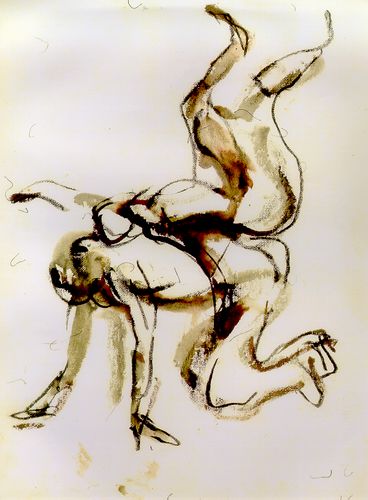Contact Improvisation in Amsterdam & Netherlands
| Home | CALENDAR ( Events and Workshops ) |
Weekly Jam Info | About Contact Improvisation | Contact Us | Images | Other Links |
|
||||
|
The definition above says that contact improvisation is normally danced without music. However in many jams there is music which adds another dimension to the form. One can dance contact improvisation to to just about any musical style. I can remember dancing to classical music, house, jazz, and often to experimental new forms or free jazz. The freedom to dance to any musical style could arise from the fact that contact improvisation is not rhythmic in a literal sense; dancers are not required to move in a way that mimics a particular audible beat. Instead the timing of the dance may be set by a kind of internal physical and emotional rhythm. Thus anything that inspires an emotional or physical response can in principle help to guide a dance. Touch is not essential for contact improvisation. Visual and aural communication between dancers provide plenty of inspiration to open the dance up. The best thing to do to understand contact improvisation is to come see what its all about and to join in.
|
